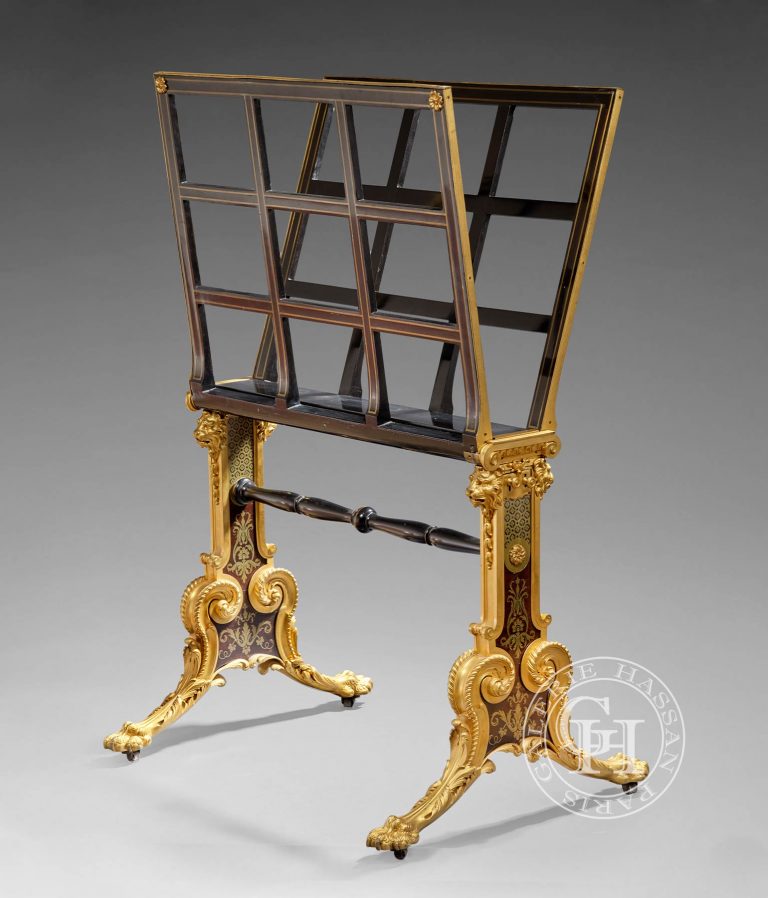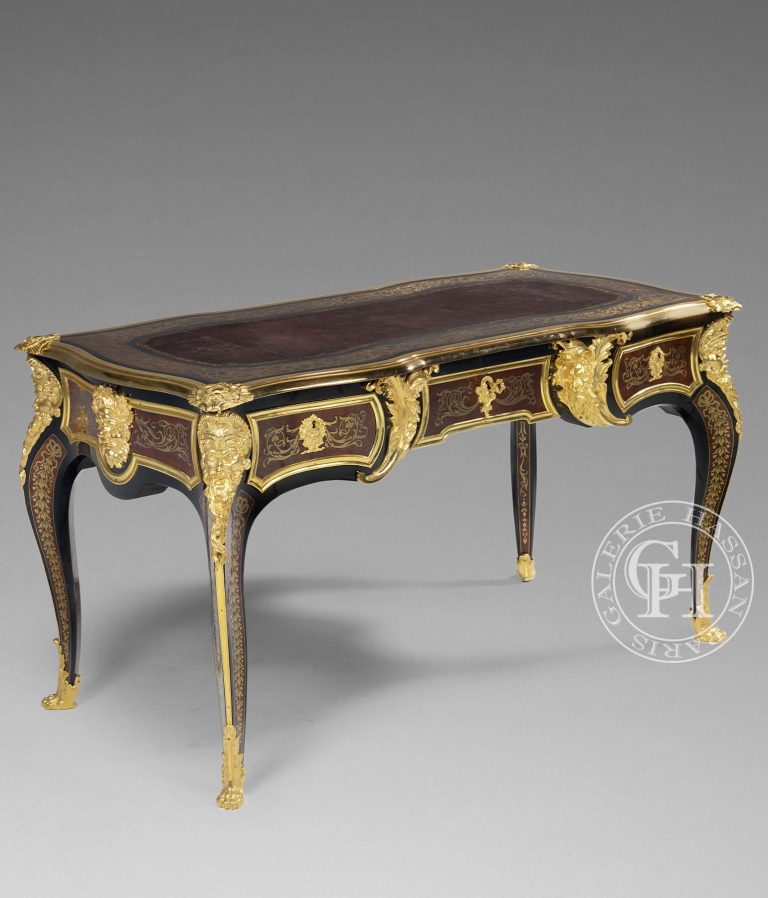Cabinetmaker
Boulle André-Charles
1642-1732
André-Charles Boulle is a French cabinetmaker, founder, gilder, and designer of the 17th and 18th centuries. Cabinetmaker to the king, he was the first to apply gilded bronze to cabinetmaking. Over the centuries since his death, his name and that of his family has become associated with the art he perfected, the inlay of tortoiseshell, brass and pewter into ebony. It has become known as Boulle Work, and the École Boulle (founded in 1886), a college of fine arts and crafts and applied arts in Paris, continues today to bear testimony to his enduring art, the art of inlay.
The specificity of Boulle’s work consists in decorating the furniture with marquetry veneer made of different materials: report wood, pewter metal, brass and tortoise shell, cut according to a very precise drawing and glued to the frame of the furniture in the style of a puzzle. In order to save and profit from expensive materials, he used a positive / negative inversion system: the part where the scale serves as the bottom and the metal makes the pattern and the counterpart where the metal makes the bottom and the scales the pattern. The two temporarily glued materials were stamped according to the chosen design, which then made it possible, by separating them, to match the patterns without additional work.
The death of Louis XIV in 1715 marked a turning point.
André-Charles Boulle, 72 years old, decides to hand over to his four sons, who will continue his work. An inventory tells us that the workshop then employs about thirty workers and keeps about a hundred pieces of furniture and bronze objects. Boulle will however continue his activity, thus realizing two medalists for the director of Coins and Medals where the gilded bronzes follow with imagination the fashion of the whim.


